Day 2 of a three day Private Winter Tour today. The weather was much nicer, cloudy to start but getting progressively brighter through the day, if a little chilly, particularly out in the fresh W wind. We spent the day down in the Norfolk Broads.
After the long drive down to the Broads, we started with a quick circuit of Ludham Airfield. We looked in the field where the swans had been a few days ago, but there was just one lone Whooper Swan out on the winter wheat today, looking rather lonely. The Bewick’s Swans which we had seen here had obviously gone elsewhere.
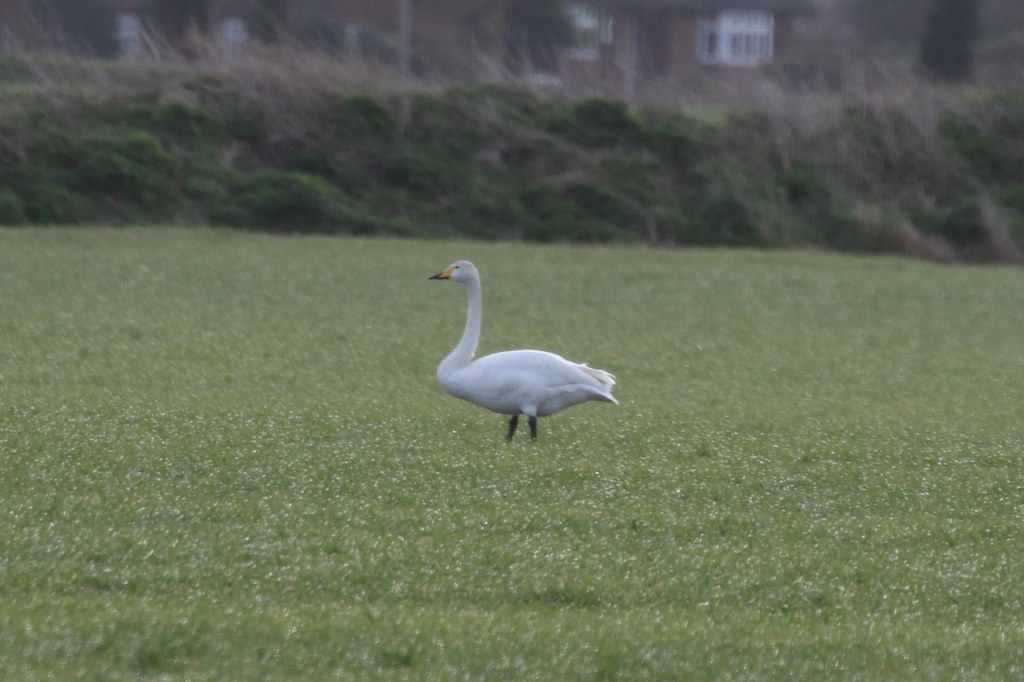
We continued on round the airfield, and came across a melee of gulls following a huge harvester in the process of harvesting a sugar beet field. There were lots of gulls loafing around close to the road and then we noticed an egret just beyond them, standing on the cultivated ground in the field, not far from the edge. It was a Cattle Egret!
There have been a handful of Cattle Egrets in the Broads this winter but this was a bizarre place to see one. It walked over to where the harvester had just been through and picked at the ground. Then when all the gulls flew over to follow the harvester on the other side of field, the Cattle Egret flew over there with them. Perhaps it should be called Sugar Beet Egret instead!
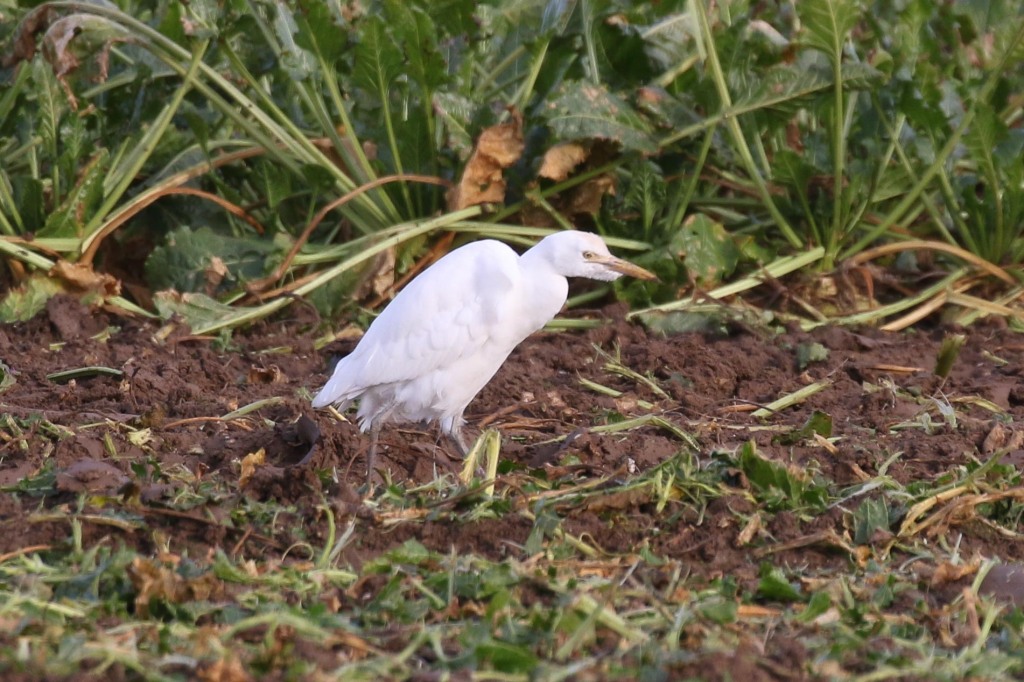
We circled back round to Ludham village and down to St Benet’s Levels to see if there were any more swans there this morning. A Cetti’s Warbler was singing from the reeds by the river as we pulled up. There were indeed lots of swans out on the grazing marshes, but as we scanned through with the scopes we could see they were all Whooper Swans with the Mute Swans. There was no sign of any Bewick’s Swans here either.
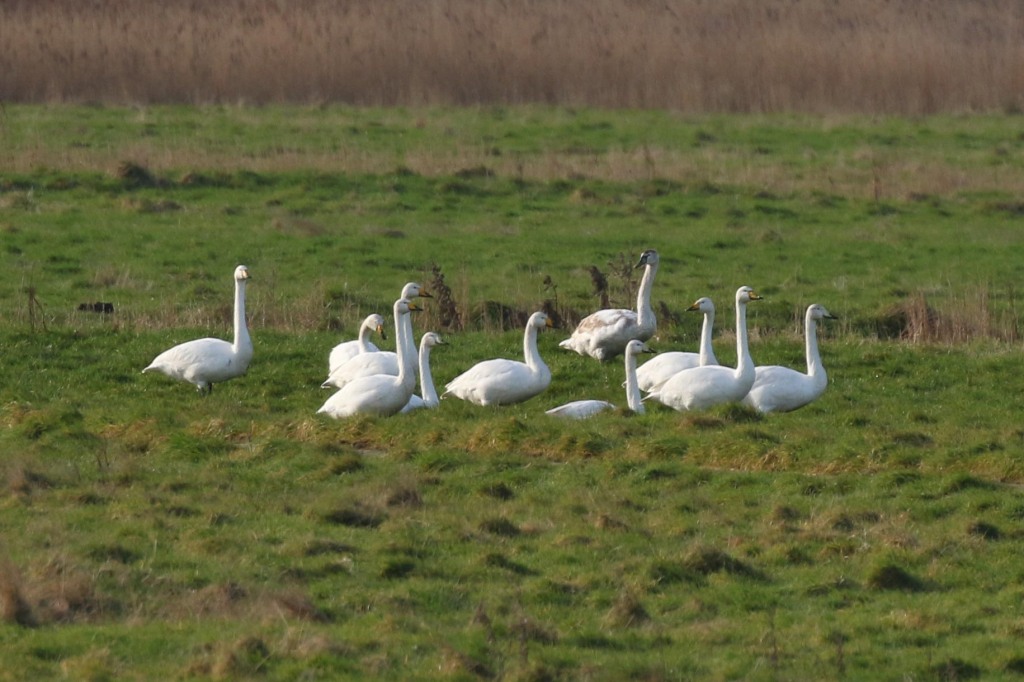
It has been a poor year for Bewick’s Swans here in the UK, continuing a trend of declining numbers coming here for the winter. With milder weather on the Continent in recent winters, they are ‘short-stopping’, staying to feed around the Baltic rather than continuing west. It was also feeling like the few that had come here this winter might have left early – there were several groups seen flying over places other than their regular wintering spots over the last few days.
We scanned the grazing marshes to see if there was anything else out there. We found a few Chinese Water Deer but no sign of any Cranes today and otherwise it was rather quiet here. We decided to move on.
There have been some Cranes at Clippesby in recent days so we drove round to look for those next. One of the locals was already there when we arrived and broke the news to us – there was no sign of any Cranes now, despite eight reported here earlier this morning. We swung round via some of the other fields where we had seen them in recent weeks but they were not there either. It was not going to plan!
Moving on, we headed for Rollesby Broad next. As we got out of the minibus, a pair of Great Crested Grebes were swimming on the water just off the bank, looking very smart now. A raft of Common Pochard and Tufted Duck was over by the reeds at the back and several Goldeneye were out in the middle of the Broad. A Grey Wagtail flew off calling and a Lesser Black-backed Gull was loafing on the sailing club jetty.
We quickly found what we had come for too – the Red-necked Grebe was over the back, with the Pochard. We had good views of it through the scope, if a little distant. It even appears to be getting a little bit of summer red on its neck already, which was apparent when it turned and caught the light.
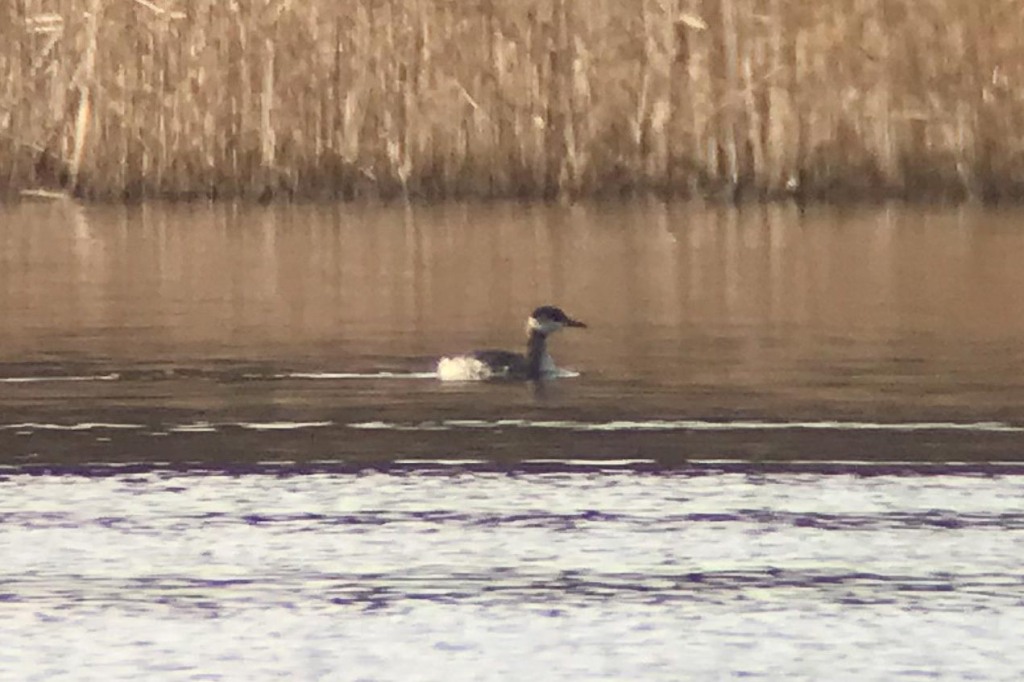
An odd-looking duck in with the Pochard caught our eye too. It was tricky to get a good look at first, given the distance and the fact that it was diving continually. It was a female, noticeably darker than the female Pochards and rather rich reddish brown on the head and breast. It appeared to have some white under the tail too.
The shape looked like a female Ferruginous Duck but it was not quite right for that species. The flanks were scalloped with pale, contrasting slightly with the darker breast, the undertail was not clean and square and the belly was dirty. These ducks hybridise very regularly, particularly escaped captive stock, and this was most like a hybrid Ferruginous Duck x Common Pochard. Interesting to see though.
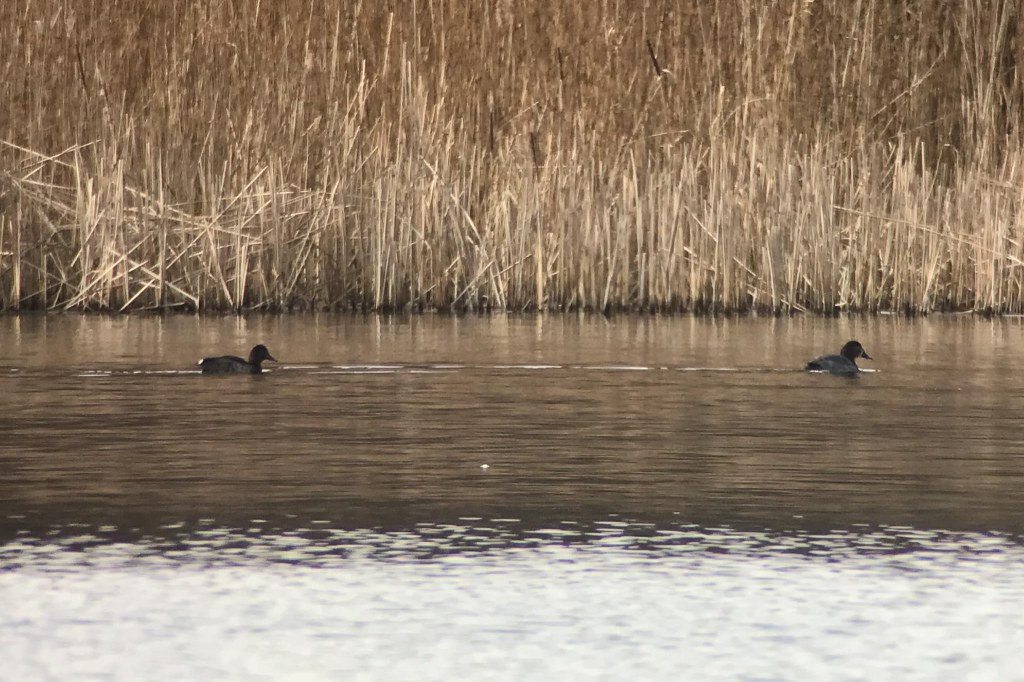
Round via Martham for a quick loo stop, we headed north along the coast road. We pulled in at a concrete pad to scan the fields, where a large flock of Pink-footed Geese was feeding on the grass. Three Egyptian Geese were in the field the other side of the road. A large flock of Golden Plover was out on the grass too with the Lapwing.
Scanning round, we picked up three distant Common Cranes on the bank at the back. It was a family party, two adults and last year’s juvenile still with them. The female and juvenile walked down into the reeds to feed, but what was presumably the male stayed on the bank for a bit longer, keeping watch. It then walked a little closer towards us, before dropping down behind the bank. A good start, to find some Cranes, but we would still like to see some closer.
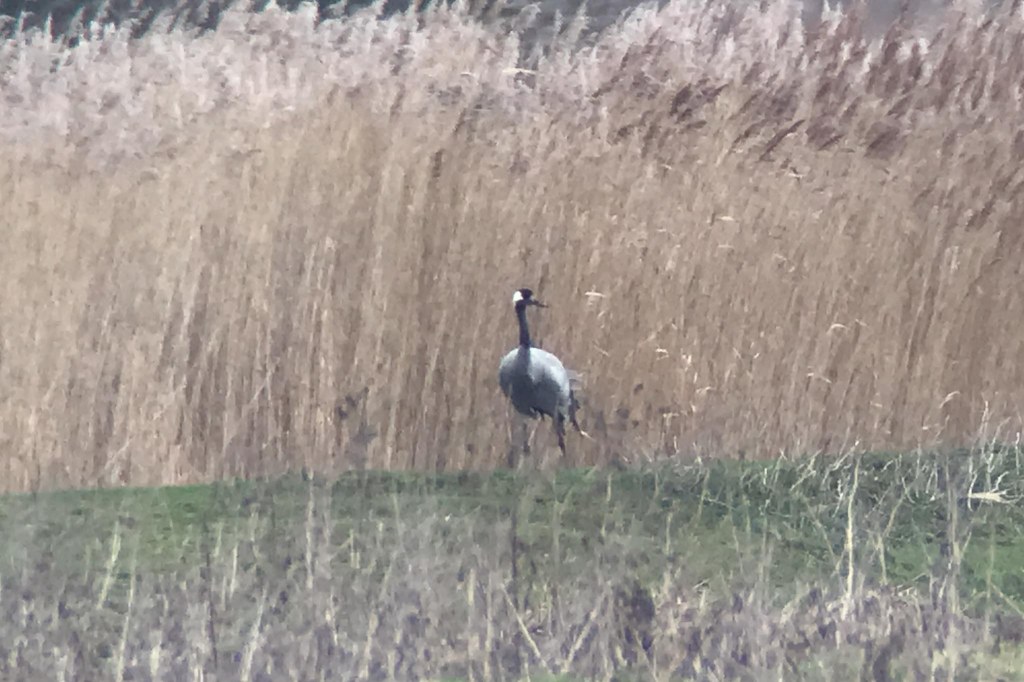
We carried on north and found another huge flock of Pink-footed Geese, feeding in a recently harvested sugar beet field this time. We had a quick look through from the shelter of the minibus – we couldn’t see anything obviously different with them, but lots of the geese were out of view.
We were still trying to find a Bewick’s Swan, but it is mostly Mute Swans along here these days. We had better luck further up at Ingham. We could see several swans still out on the wet fields as we drove up and a quick look revealed two Bewick’s Swans on the edge of a small pool. Success at last! We parked carefully and got out to get them in the scopes.
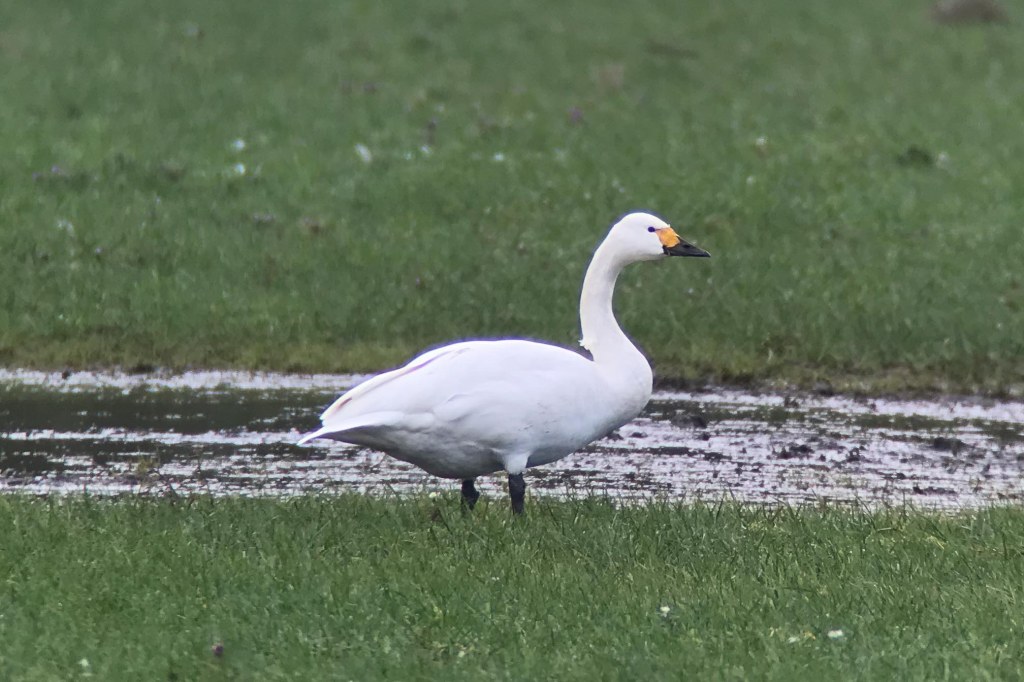
There were plenty of swans but mostly Mute Swans in the fields here too now. We found two Whooper Swans a little further up with them, but unless they were just feeding elsewhere today, it did feel rather like a lot of the swans have already departed.
Knowing that the Common Cranes can come and go during the day, we swung back round via Clippesby again. Sure enough, there were Cranes in the fields here now. We pulled up and waited for the pigeons to flush from the maize strip near the road and the Cranes to settle, then got out very carefully.
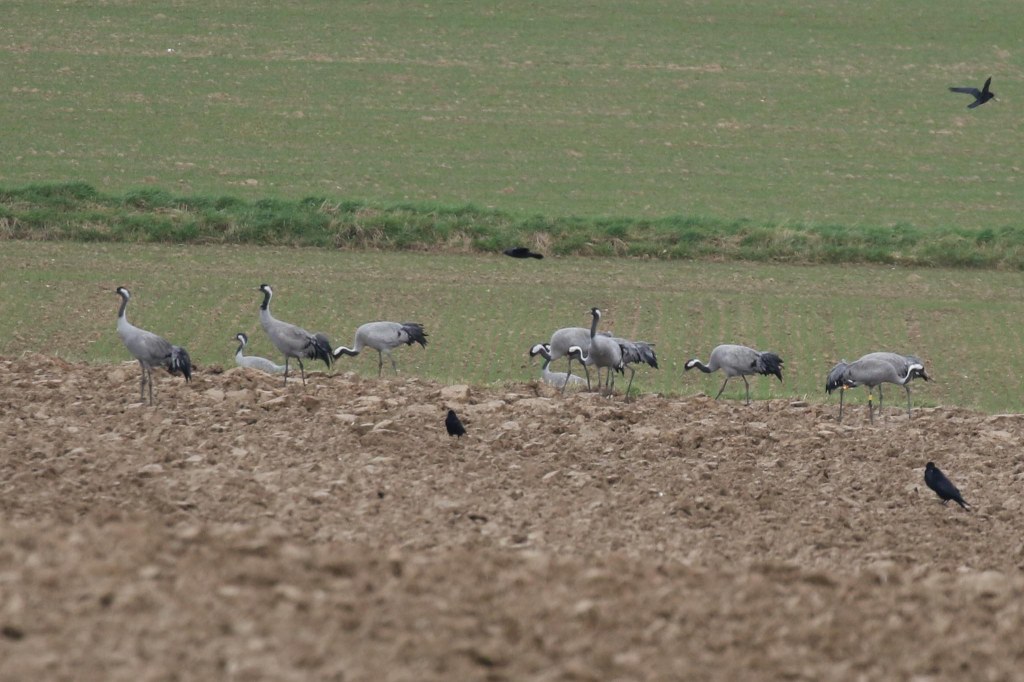
Some were out of view, but as they walked around we counted at least 30 Cranes here now. One bird had in with then was sporting a set of colour rings, the Finnish bird ringed as juvenile in July 2020, and resident here since April 2021. All the Norfolk Cranes are genuine wild birds, not part of the reintroduction scheme on the Somerset Levels, having first reintroduced themselves back in 1979 and numbers have steadily expanded here since. The presence of the colour-ringed Finnish Crane here now shows just how birds can drift over the North Sea by mistake on their way north from their wintering grounds in Spain.
There were lots of Red-legged Partridges in the ploughed field nearest the road. Lots of small birds were coming and going from the cut maize strip along the far edge and training the scope on the hedge we could see lots of Yellowhammers and Reed Buntings there.
From here, we made our way down to Strumpshaw Fen for lunch. A small group of Siskins flew in and landed in the alders by the car park as we arrived. A steady stream of tits was coming and going from the feeders by the picnic tables including both Marsh Tits and Coal Tits, which gave good views as we ate.
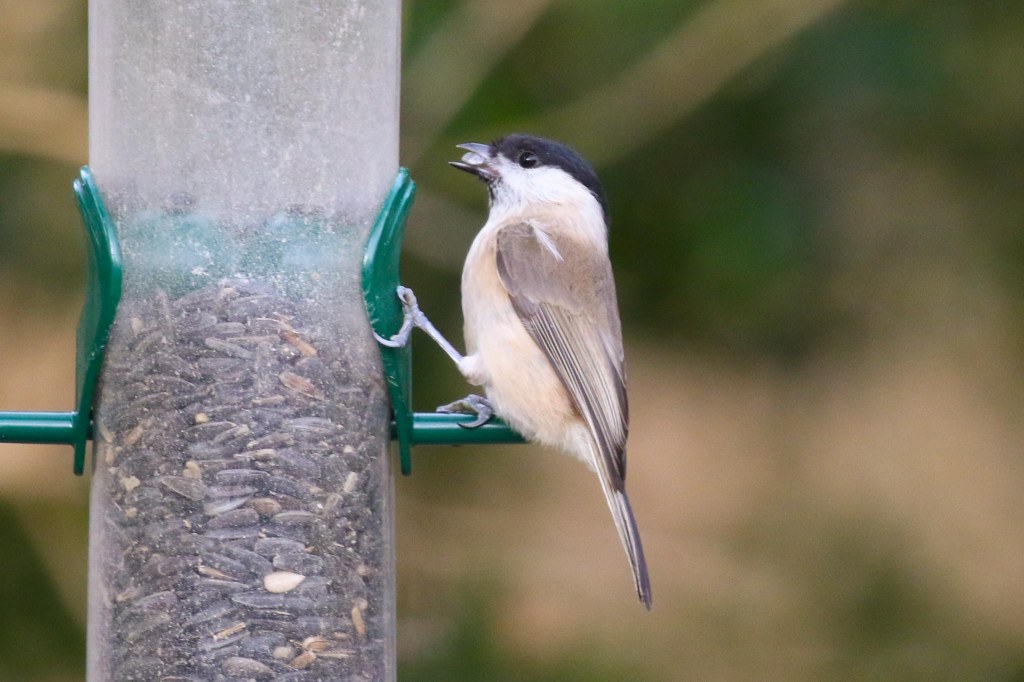
After lunch, we had a quick look on the Reception pool. There were several Shoveler, lots of Gadwall and Coot out there today, but we couldn’t see anything different despite scanning the reeds carefully.
We had some time to play with, but not enough to go for a long walk now, so we swung round to Buckenham for a quick look out on the grazing marshes. There were lots of Pink-footed Geese there, plus the resident Canadas and Greylags, but no sign of any other geese today. The Wigeon close by the track offered their usual good photographic opportunites and there was a good number of Shelduck on the pools by the fishermen’s car park. A small flock of Golden Plover flew over and something spooked all the Lapwing up from the back but we couldn’t see what.
On our way out, we had seen just two Mistle Thrushes in the paddocks, but on the way back, they were now full of Redwings and Fieldfares. We had a quick look from the minibus as we passed. Several Goldfinches dropped down in the middle too.
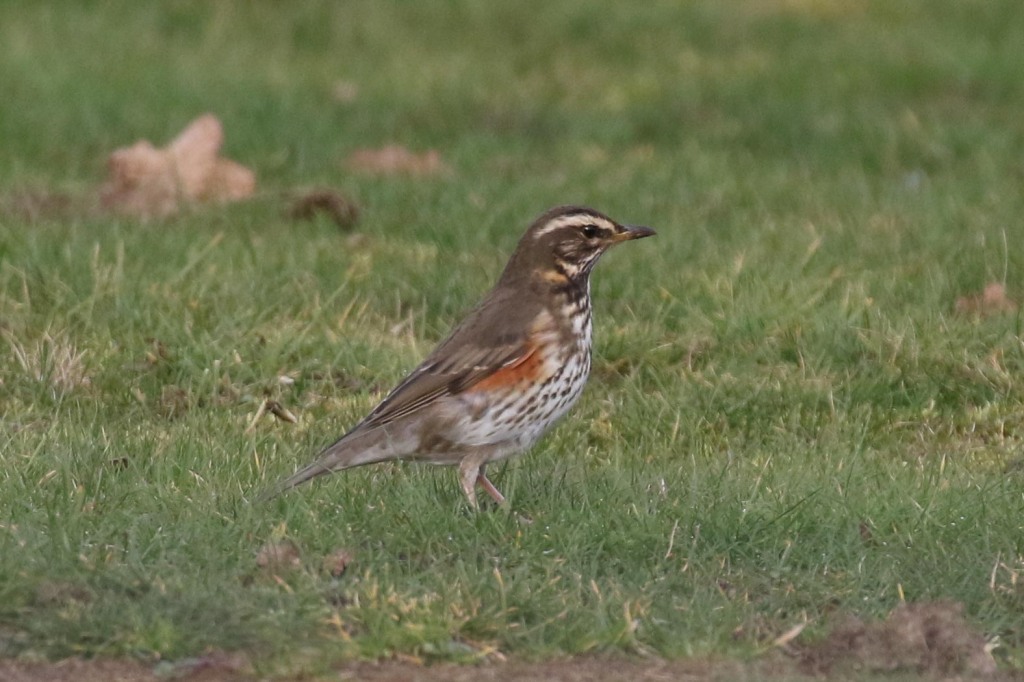
We planned to finish up at Hickling Broad, so we parked in the car park and checked in at Visitor Centre. The cloud which had been with us all day had cleared through as we drove here and it was bright and sunny now. We set off along the path to Stubb Mill. Two Egyptian Geese were loafing in the winter wheat behind the hedge and a Muntjac was out in the middle of the field. A Stock Dove flew off. A female Kestrel dropped down out of the hedge to the ground.
There were lots of ducks on Brendan’s Marsh – Teal, Shoveler, Gadwall, and one or two Wigeon. Several Common Snipe flushed from the bank as we walked past and flew out to the middle, where a single Redshank was picking around. A Great White Egret flew across over the reeds at the back, turned and dropped down out of view.
We continued on down to the corner and climbed up onto the bank. Several Marsh Harriers were still quartering out over the reeds and we were just scanning when a bird flying low across caught the light. Bittern! Unfortunately, despite shouting immediately, it dropped back down into the reeds before everyone could get onto it.
Looking out from the Stubb Mill viewpoint, we could already see quite a few Marsh Harriers in, flying back and forth over the reeds or perched in the bushes. Others were drifting in slowly all the time we were there. We had a peak count of 24 all in the air together at one point, but there were still a few more which came in after that.
Several huge flocks of Pink-footed Geese came up from the fields way off towards the coast, presumably the birds we had seen earlier in the sugar beet over at Waxham given the direction, heading off to roost. Another Great White Egret flew across over the reeds at the back. A flock of Linnets whirled around and landed in the oak trees a couple of times and there was a good selection of mammals to look at Chinese Water Deer, Muntjac, Brown Hare and a Rabbit out on the grass.
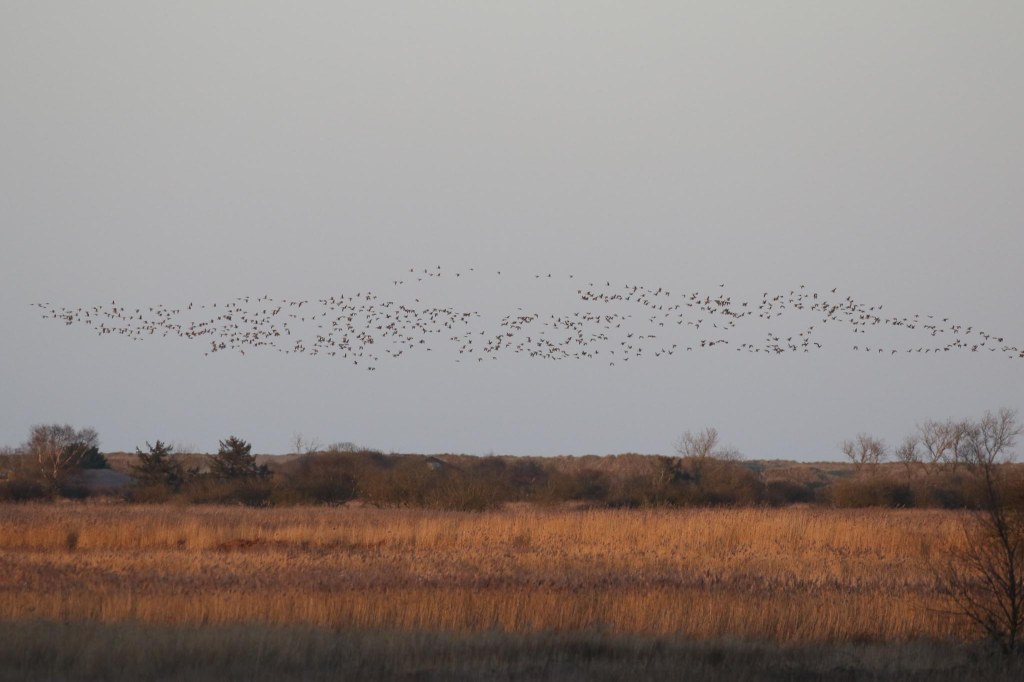
Things were slow coming in tonight, probably out enjoying the late sunshine, making the most of it and hunting to the last. Finally a Hen Harrier appeared, a smart grey male, across over the reeds at back. It spend a few minutes flying round in and out of the bushes in reedbed where the Marsh Harriers were gathering.
With the nights drawing out, it would be late to stay right until dark tonight and people were starting to get cold now. With a long drive back, we decided it was time to call it a day. We had another busy day to look forward to tomorrow.
















